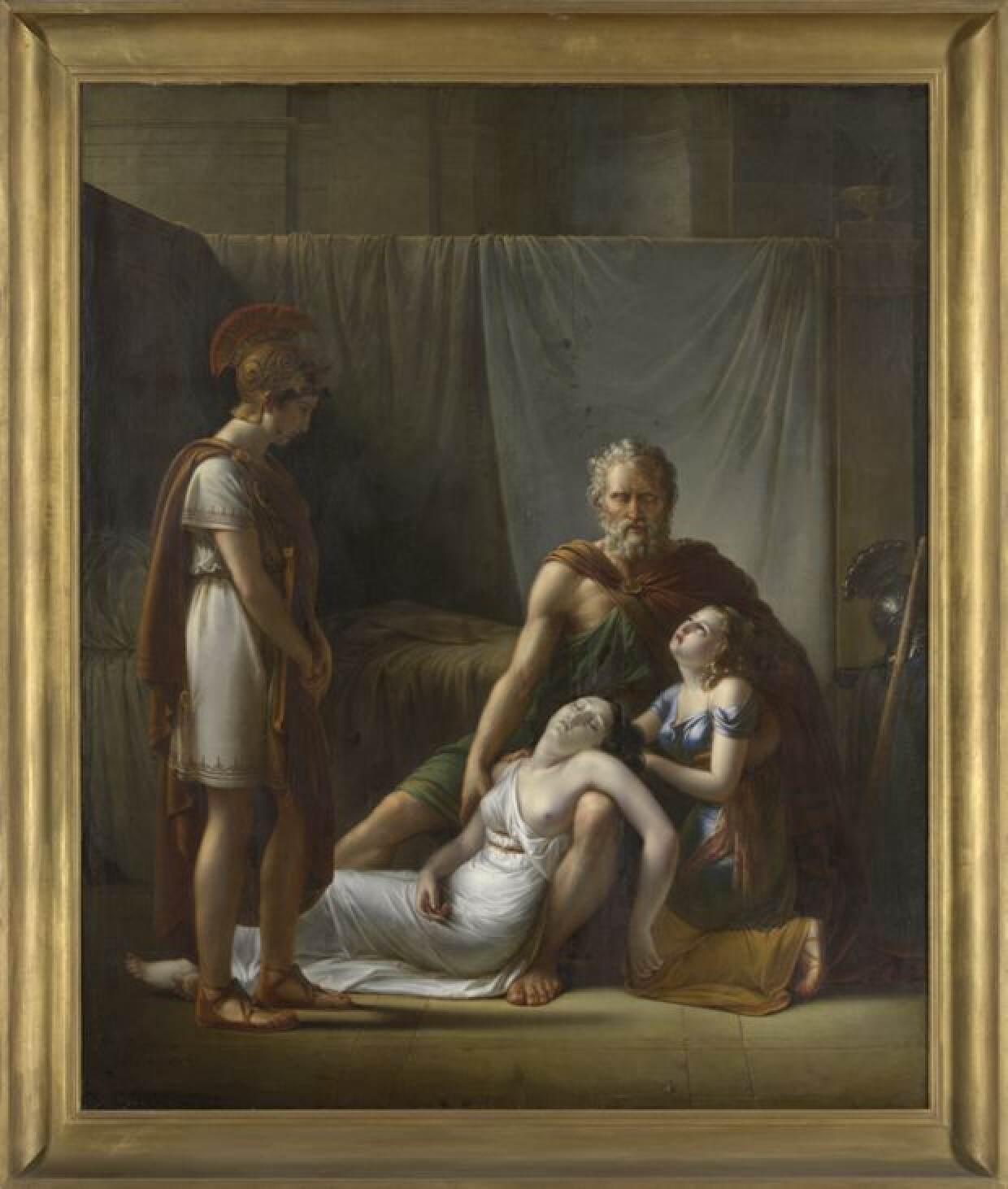Close
Manufacturer
Franciscus Josephus KinsoenPeriod and date
19de eeuwKinsoen drew inspiration for this painting from Jean-François Marmontel's historical and philosophical novel, Bélisaire, published in 1767. The popular book tells the sad story of Belisarius, the best general at the time of Justinian, who is falsely accused of treason and blinded by order of the emperor. Kinsoen paints the episode from Marmontel's book in which Belisarius returns home after his misadventures and his wife Antonina dies of grief at the sight of her husband having been tortured in such a gruesome manner. His weeping daughter Eudoxe looks towards soldier Tiberius who eventually convinces the emperor of Belisarius' innocence and will later marry Eudoxe. The composition is very well balanced according to the ideal laws of academic art. There is a perfect visual balance between the tall figure of the soldier on the left and the three figures on the right, which together form a beautiful triangle. Belisarius, Antonina and Eudoxe are interconnected and form a tight block. Through his posture, Belisarius offers protection over his wife and daughter. The contrast between the soldier's virility and the woman's sensitivity is a theme also used by French neoclassical painter Jacques Louis David (Paris 1748 - Brussels 1825) in the Oath of the Horatians in 1784-1785. The Death of Belisarius' Wife is an important work because it is the only historical painting we know of by Kinsoen.
MASTERPIECE
Discover more about this masterpiece in the video.
